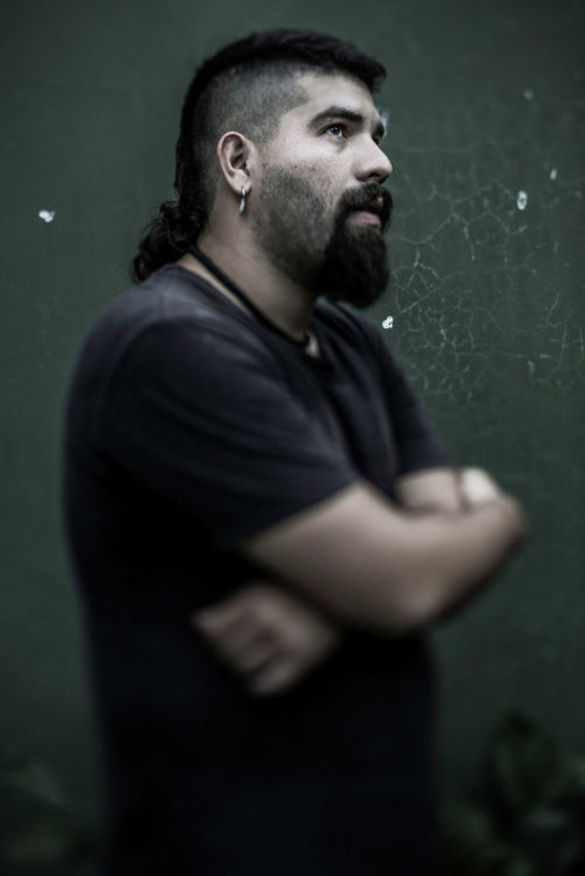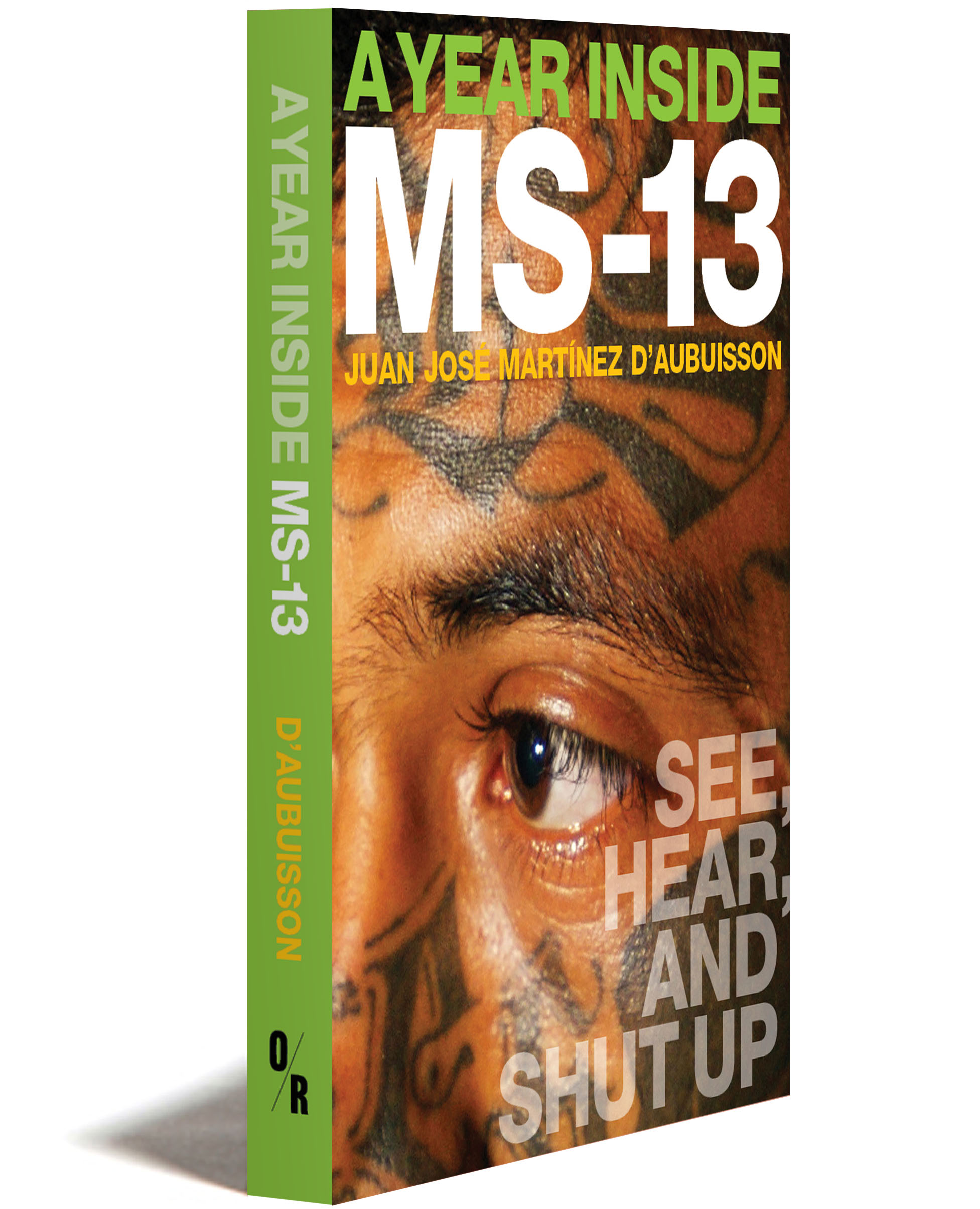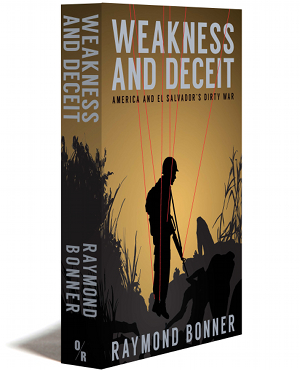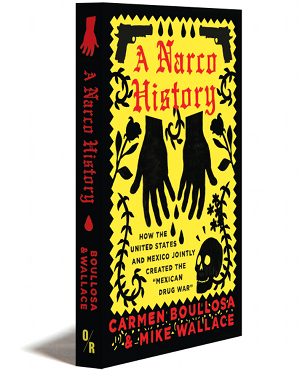A Year Inside MS-13
SEE, HEAR, AND SHUT UP
JUAN JOSÉ MARTÍNEZ D'AUBUISSON
Translated by NATASCHA ELENA UHLMANN
A description from the belly of the beast that is MS-13: the first book to reveal the inner workings of the most violent gang in the world, written by an anthropologist who was there.
Selected as one of the ten best books of the year by El Diario TweetAbout the Book
This short, intense book exposes life inside the largest, most violent gang in the world, Mara Salvatrucha 13, more commonly known as MS-13. Right in the heart of El Salvador’s capital San Salvador, anthropologist Juan José Martínez d´Aubuisson observes firsthand an escalating cycle of brutality between MS-13 and its sworn enemies from Barrio 18 as it becomes a war fought on a professional scale with grenades and machine guns.
For the better part of a year, d´Aubuisson was embedded in one of the cells of MS-13, where he learned its moral codes, rules, legends, and contradictions. His journey into the heart of the gang is guided by an enigmatic character, Destino, a veteran leader of MS-13. After many conversations with Destino, a strange kind of friendship emerges between the two, and the anthropologist understands not only the origin of the gang and its war with Barrio 18 but the deep-seated reasons for the regional violence. The book culminates in one of the most violent acts ever in an area that has seen more than its share: a full-scale attack on a public bus with thirty-two passengers on board. Fourteen people were killed and twenty-eight wounded.
Almost all the principal characters in this book end up dying: some are killed in the war, while others fall to the state security forces. Those that do escape the war are imprisoned, exiled or murdered by their own gang. This is a true testimony of life inside a wild gang, in a neighborhood governed by abandoned boys.
128 pages • Paperback ISBN 978-1-68219-199-6 • E-book 978-1-68219-200-9
About the Author

Juan José Martínez d´Aubuisson is a Salvadoran socio-cultural anthropologist committed to understanding violence in Central America. His uncle was one of Latin America’s most notoriously brutal military officers during the 1980s.
Read an Excerpt
This probably isn’t the best day to start my research. It’s the 18th. A bad omen for MS-13. On this day, Barrio 18 tends to avenge its dead—those killed by MS just five days before, on the 13th. The air is tense.
As we approach the last neighborhood on the hill, our escort watches us like a hawk. He leaves us in the care of another pair of eyes that repeat the process.
“A little faster if you can, brother.”
It is Marcos, riding in tandem on the cheap Chinese motorcycle that serves as our transportation. I push the motor until it is spewing exhaust, groaning with each pothole. And Marcos repeats, trying to hide his nerves:
“Maybe a little faster, still. Once we’re a little higher up we can slow down.”
Our surroundings have a rural air. Bucolic, really. Dirt roads, and brick houses with fiber cement for roofing. You can still see hints of the cardboard shacks they once were. If not for the graffiti, it would look like an average neighborhood on the fringe of some city. The rainy season has yet to arrive, but every so often we come across pools of stagnant water. Pools that in winter become a rushing river, threatening to sweep up any living thing in the area.
“This isn’t even the worst of it. Around there is where they’d toss the bodies,” reports Marcos, livening our ascent up the hill. He is a young man, some nineteen years old. He has lived here all his life. His brother was a member of Mara Salvatrucha and he knows these roads like the palm of his hand. He now guides me through this hell like Dante’s Virgil, and I, clumsy and scared, follow his instructions to a T. If he tells me not to look in some direction, I don’t; if he tells me to speed up, I do so without asking questions.
“Slow down now, we’re in the Salvatrucha zone,” he says, and by his tone I gather that this is supposed to be reassuring.
Block by block, the walls start to show MS-13 graffiti painted in black or blue. As we draw closer, the signs, walls, and sidewalks announce to us that the brothers of MS-13 live here.
We reach our destination, the last neighborhood on the hill. We are greeted by a large gang mural, guarded over by a handful of young men who, upon seeing us, stand defiantly. Marcos greets them. They look us over and return to their posts without greeting us back. Like old hens, they watch over their roost.
I am here to do field work for an anthropological thesis on violence in El Salvador, specifically that which results from a war between the two biggest gangs in America: Mara Salvatrucha and Barrio 18. Their conflict has endured for decades, and traversed continents. The whys of this war between babes is what brings me here.
Two months ago I started knocking on doors of NGOs that work with gang members, looking for an in. One by one, I was turned down and told that the situation was too complicated. Finally, after a long search, I found a priest who was willing to help me. The institution he heads up has operated in the area for years and has contacts with the gang on the hill. They run a youth center at the top of the hill, and this is precisely where Marcos now guides me.
The house is large, and it is near the outskirts of the community, just towards the end of the only road that leads there. At the entrance, we find Gustavo painting colored letters on the wall. He is in charge of the center. He’s young, somewhere between twenty-five and thirty. He walks and talks as if he were on a beach somewhere. It seems as if nothing and no one can get under his skin.
With that same serene affect, he tells me the priest had spoken about me and asks what I hope to learn in the study. I babble on about my theoretical lens, my methodological schema and hypothesis.
Nothing. Just silence.
He crosses his arms and asks, “So you want to, like, meet the gang members? There’s a bunch here, but they’re easygoing.”
“Yes…Something like that,” I answer.
He tells me if I would like to remain alive throughout the course of my study there are several things I should know and several rules I should follow:
The first is strict: I am to never, under any circumstances mention the number 18, or wear shirts that bear those digits.
In a place like this, it seems, that number draws death like a moth to a flame.
I shouldn’t walk alone. They don’t know me, and they might confuse me for an enemy.
Marcos agrees with a nervous nod of the head. They tell me that the last novitiate who neglected the rule was intercepted by a gang in transit and was forced to strip for a tattoo search.
Gustavo scans me from head to toe, and disapproves.
“No, you can’t be coming like this, it’s dangerous.”
He means my earring and haircut. He says I should look more formal, more serious.
Gustavo and I reach a deal. He’ll let me visit the youth center and conduct my research here if I collaborate with him on his projects. Before leaving, Gustavo and Marcos whisper among themselves and then give me an offer I can’t turn down.
“Listen, would you want to meet the guys who run this place?”
I say yes, and they tell me to follow a protocol, as if they were taking a dangerous beast from its cage. They instruct me to avoid staring at their tattoos or asking them anything, just to introduce myself and leave.
Marcos walks to the backyard and returns a few minutes later accompanied by two men. They are both somewhere around thirty. One is tan, with a shaved head and a sparse mustache buttressed by tattoos. The other sports a light complexion and blond hair, and a gigantic MS tattooed on his forehead. He looks me up and down and extends his hand with a barely-hidden glare. They ask my name, tell me theirs and depart unhurriedly.
Tomorrow, Gustavo will be waiting for me at the bottom of the hill to make the ascent again at 7 a.m. As we depart, in front of the youth center I see an enormous mural with the initials GCS—Guanacos Criminales Salvatrucha—the clica that runs the highland.
Marcos and I mount the bike and take off. Bit by bit, we leave behind the dirt roads and graffiti, and again, my Virgil begs:
“Just a little bit faster, brother.”
In the Media
- “When the MS-13 Played Possum in Guatemala” — A YEAR INSIDE MS-13 author Juan José Martínez d´Aubuisson writes for InSight Crime (2/10/2022)
- “The Omnipresent Business of the MS-13” — A YEAR INSIDE MS-13 author Juan José Martínez d´Aubuisson writes for InSight Crime (1/29/2022)
- “How MS-13 Became Lords of the Trash Dump in Honduras” — A YEAR INSIDE MS-13 author Juan José Martínez d´Aubuisson writes for InSight Crime (1/24/2022)
- “See, hear, and shut up” is the strict gang protocol, subject to severe sanction. D’Aubuisson saw and heard, but did not shut up.” —an interview with Juan Jose Martinez d’Aubuisson , author of A Year Inside MS-13, in The Independent (8/29/2019)
- “The depictions of MS-13 as animals are as simplistic as they are dehumanizing. And they obscure what spawned the violent gang in the first place: US imperialism.” —Belén Fernández, author of EXILE, reviews A YEAR INSIDE MS-13 for Jacobin (8/29/2019)






